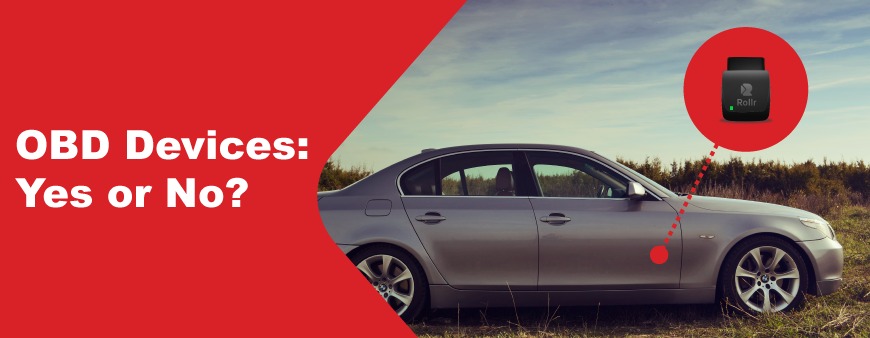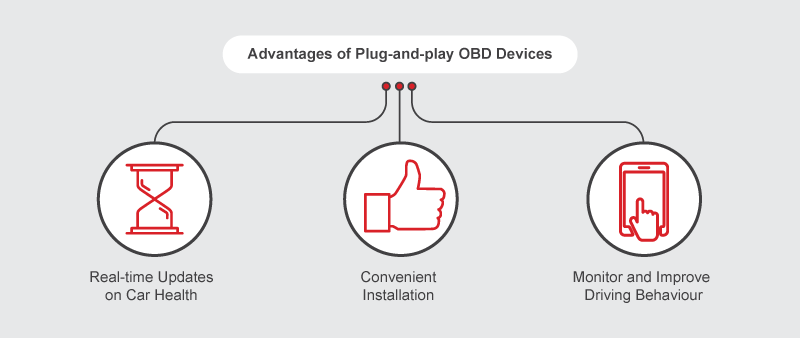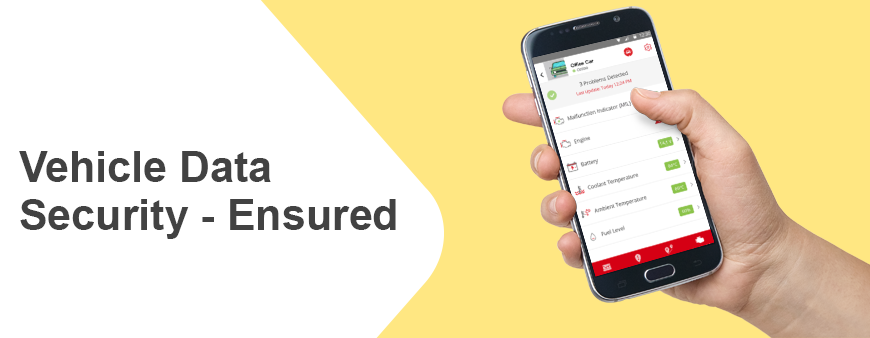
If you want to make sure that your car always runs in peak condition, an OBD tracking device is what you need. OBD scanners basically give you an inside view of your car and its electronic components, so that you know what’s wrong and what needs to be fixed. With this data, you can say goodbye to unexpected breakdowns and stop worrying about what’s wrong with the car every time the check engine light goes on.
That being said, these devices also come with a set of concerns around their usage.
So here, we take a look at what OBD tracking devices can do for your car, what are the common concerns, and how to get around those when choosing one for your car.
What’s Great
Plug-and-play OBD scanners/devices, especially the Rollr Mini, bring you three distinct advantages:

Real-time Updates on Car Health
OBD tracking devices tap into your car’s internal electronics to give you a look at everything that’s happening under the hood. You know if your engine is performing well, the battery voltage, fuel levels, emissions, coolant temperature, and other vehicle diagnostics data. More importantly, you receive alerts when there’s a problem with any of the components, so you can judge how severe the issue is and when to get it fixed.
Convenient Installation
A device like the Rollr Mini simply plugs into the OBD-II port. The installation process involves just plugging the device and syncing it with your app, something that you can do in 5 minutes flat.
Monitor and Improve Driving Behaviour
In addition to the above benefits, the Rollr Mini brings in an added advantage. It taps into data regarding vehicle speed, hard accelerations and brakes, and engine idling. All of this is tracked to calculate the Rollrscore – a number that rates driving behaviour. This helps you understand how your car is being driven, whether there are any harmful driving habits, and how those can be improved.
Check out everything that’s possible with the Rollr Mini
What Car Owners Worry About
While the benefits are great, there are certain common queries and concerns around plug-and-play OBD tracking devices that we regularly come across. Let’s look at a few of these issues, and what to look out for before you choose an OBD device:
Battery Drain
All electronic accessories added to your car consume power from the battery, even when the engine is not running. So a poorly designed OBD device, when left plugged into the OBD port, might completely drain your battery. Worse still, if a device is not carefully designed, it can turn on your ECU even while the car is not running, draining your battery even faster.
What you need to check is –
- Does the device support a sleep mode, where it is programmed to draw minimal power from the battery?
- How much power is being used when in sleep mode?
Ideally, your chosen OBD tracking device should support a sleep mode, where it draws a maximum 5mA or current from the battery, or less.
Coming down to the Rollr Mini, battery drain is not a cause of worry because:
- It supports a sleep mode
- It draws less than 2 mA of power when in sleep mode
- It does not keep the vehicle ECU on if the engine is switched off
Risk of Data Hack
The lack of connectivity in your vehicle acts a natural barrier against any malware interfering with your electronics, or data leak. Car owners worry that adding an OBD tracking device opens the door to security vulnerabilities, and can have serious safety implications.
While data security is a pertinent concern with any connected device, you should check if your OBD device offers a basic set of security measures to protect your vehicle data. Some key information that you should look for:
- How secure is the data stored on the device?
- How is the data transfer happening, and is the data securely encrypted?
- Is the data being transferred on public networks and stored on a public cloud; or does the manufacturer use private networks and servers?
Check out how the Rollr Mini ensures OBD data and GPS security.
Interference with Internal Vehicle Electronics
Because OBD tracking devices can access your vehicle’s internal electronics, it’s important to make sure that it does not compromise the performance and safety of your car. Hence, you should check if:
- The device has been thoroughly checked and certified by independent industry bodies
- The device is compatible with the exact make and model of your car, and does not cause performance issues
Susceptible to Damage
Most OBD tracking devices are installed on the driver side of the vehicle, and frequent impact on the device can lead to damage. It’s also easy to spot and one can simply unplug the device during a theft.
While this is a valid concern, there are several ways to get around it. In case of vehicle models where the device is clearly visible and susceptible to damage, the installation can be tweaked to solve the issue. With an OBD cable extension and 3M tape, the device can be placed in a safe and convenient location.
Additionally, in case of the Rollr Mini, you receive an “unplug” notification whenever someone takes out the device. So you immediately know if your car is being tampered with, and intervene accordingly.
As you see, the Rollr Mini is carefully designed to address all the common challenges faced with a lot of OBD tracking devices, so we deliver all the benefits without putting your car at risk. The device also goes beyond vehicle diagnostics and actively helps you improve fuel economy.
Wondering how?
Take a look at the RollrScore feature and how it can increase car mileage.
And if you need a demo of the Rollr Mini personal car tracking device, just fill in this quick form and our team will get in touch with you.






About The Author: Rollr
More posts by Rollr